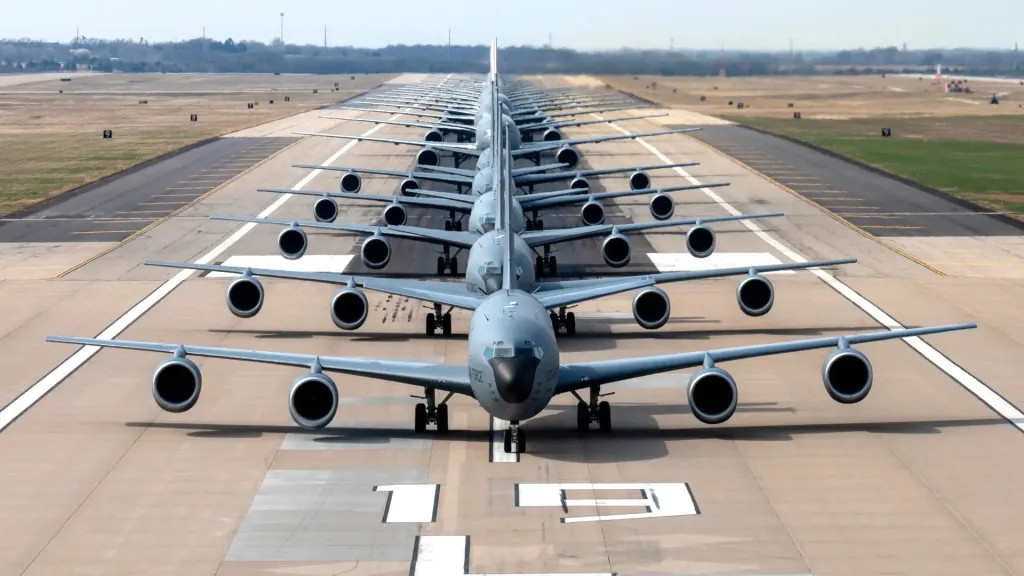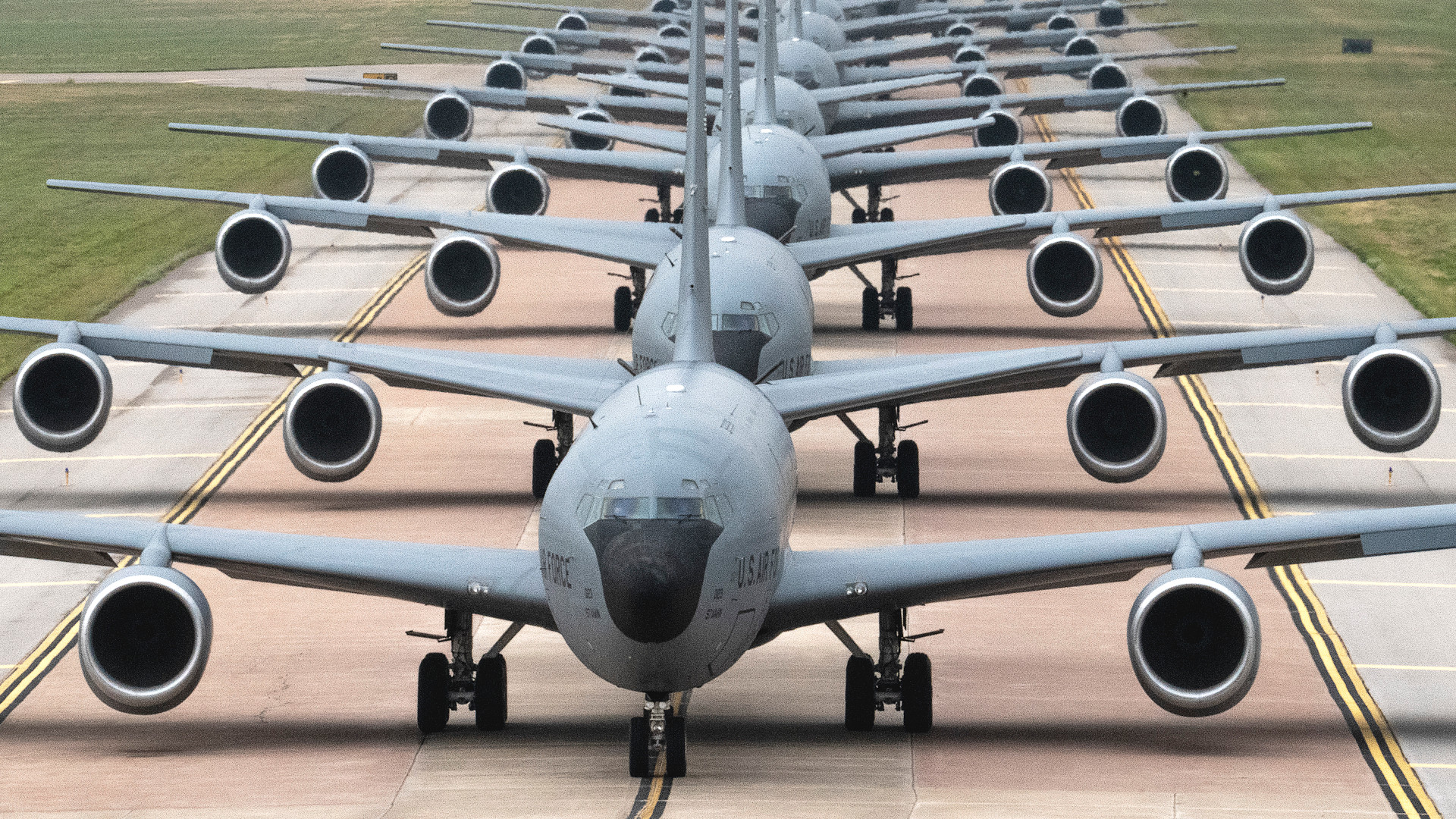The U.S. Air Force is pushing ahead with experimentation that could lead to the transformation of KC-135 tankers into optionally crewed aircraft, as well as the development of other autonomous aerial refueling capabilities. U.S. military interest in autonomous airlifters, an area where China has been notably surging forward in the past few years, is also growing.
Air Force Gen. Jacqueline Van Ovost, head of U.S. Transportation Command (TRANSCOM), discussed work on autonomous aerial refueling and airlift capabilities with The War Zone and other members of the media at a roundtable on the sidelines of the main annual Air & Space Forces Association conference yesterday. TRANSCOM serves as a centralized U.S. military-wide manager for logistical support in the air, as well as on the ground and at sea.
“So we’re actually in a … Cooperative Research and Development Agreement [CRADA] on autonomous KC-135,” Van Ovost said. “So we are looking at that.”

CRADAs provide the U.S. military with a mechanism to partner with industry, academia, and other organizations on projects outside of normal contracting processes and they typically involve an exchange of resources and data in lieu of traditional payment. Autonomous flight technology company Merlin has been leading the work relating to the KC-135 in cooperation with the Sierra Nevada Corporation (SNC), a major aerospace firm that specializes in aircraft modification, and the U.S. Air Force’s Air Mobility Command (AMC) and Air Force Materiel Command (AFMC). AMC oversees the vast majority of the service’s tankers and airlifters.
Merlin’s efforts with regard to the KC-135 have been focused first on ways autonomous capabilities can help reduce the workload for aircrews.
“Starting [on] July 22, Merlin and SNC were granted a temporary military flight release by the United States Air Force (USAF). The team conducted real-time data collection and analysis to inform the Merlin Pilot’s integration design and flight control tuning for military aircraft,” according to a press release from Merlin in August. “The flights support an ongoing agreement with Air Mobility Command (AMC) and Air Force Materiel Command (AFMC) to design, integrate, test, and demonstrate aspects of the Merlin Pilot on the KC-135. Merlin engineers also joined USAF pilots on data collection flights at MacDill Air Force Base in May 2024.”

“The flights helped the team better understand crew workload drivers for military use cases,” Merlin’s August release added. “Together, these milestones signify Merlin’s progressive system design and integration work to achieve its goal of an in-flight demonstration of the Merlin Pilot in the next year.”
Autonomous capabilities that can be integrated into existing Air Force KC-135s and other tankers could also support other ongoing initiatives. In speaking yesterday, Gen. Van Ovost highlighted AMC’s experimentation with aerial refuelers, as well as airlifters, flown by skeleton crews. The Air Force has presented this as a potential way to help increase sortie rates and overall operational capacity, especially in a potential future high-end conflict, such as one in the Pacific against China. Flight safety and other questions have been raised about these plans, as you can read about in more detail here. What Merlin, SNC, and the Air Force are working on now could help provide extra margins of safety to AMC aircrews in general.
Greater autonomy or even pilot-optional capabilities could just help breathe new life into the Air Force’s aging KC-135s, as well as feed into future aerial refueling developments. The service is currently in the process of refining core requirements for its Next Generation Air-refueling System (NGAS), which is expected to be a multi-layered ‘system of systems.’

“There’s the Analysis of Alternatives for the NGAS … that’s coming out here at the end of this year. It’s been… almost two years of work … and the initial insights are not surprising,” Gen. Van Ovost said at yesterday’s roundtable. “How do you fly into a contested environment? How do you shrink the visibility of your airplane, right? How much does it have to carry?”
Van Ovost also highlighted questions about how NGAS platforms might refuel crewed and uncrewed aircraft, and do so in instances where the tanker and/or the receiver are operating autonomously to some degree.
Crewed stealth tankers, as well as uncrewed aerial refuelers and new podded ‘buddy store’ refueling systems with collapsible or retractable booms, have already been discussed as potential components of NGAS. The initiative is now directly tied to other major modernization efforts, including the fate of plans for a new crewed sixth-generation stealth combat jet, as you can learn more about here.
“Frankly, I think in air fueling, that’s the place I would go to first [to integrate more autonomy], because we’re already seeing some capabilities for autonomous boom engagements,” the head of TRANSCOM added.
Both Boeing in the United States and Airbus in Europe have been actively working on and demonstrating capabilities to increasingly automate the process of boom-equipped tankers linking up receivers, including uncrewed ones. The boom method remains the Air Force’s preferred way of getting gas into aircraft in flight, though it does have probe-and-drogue tankers primarily for refueling helicopters and V-22 Ospreys. The probe-and-drogue method is also predominant in the U.S. Navy and U.S. Marine Corps, as well as many other countries around the world.


In addition to autonomous aerial refueling capabilities, Van Ovost talked about interest in autonomous airlifters, which the Air Force has also been experimenting with in recent years, at yesterday’s roundtable. She did highlight additional complexities that come along with uncrewed aerial logistics platforms, especially when it comes to moving personnel, that aren’t necessarily considerations when talking about pilotless tankers.

“If I have an autonomous capability that’s doing that last tactical mile, and it goes to an airfield or a road, how does it autonomously offload, turn around, and fly back?” she asked rhetorically. “So we are looking at what technologies that [it] would… take to do that, what will be the concept of operations. … could you launch it out of C-17? Would it then recover at a known airfield somewhere, in Australia or whatever? So we’re looking at all of that and that certainly is on the table.”
Van Ovost’s mention of Australia underscores significant discussions ongoing now about what kind of new and novel logistics chains will be required to sustain future operations in a high-end Pacific fight where U.S. forces will be dispersed across broad areas many of which will be separated by large expanses of water. Distributed hub-and-spoke air mobility concepts incorporating cargo and potentially personnel-carrying drones, which would also be more employable in higher-risk environments, could be key elements of that equation in the future.
China is looking at the same realities for future operations and, while the U.S. Air Force has been experimenting with uncrewed airlifters, there has been a much more substantial explosion in developments in this realm from Chinese aviation firms recently. Just this year, Chinese drone maker Tengden and the country’s state-run Aviation Industry Corporation of China (AVIC) announced the first flights of two new uncrewed cargo-carrying aircraft. Tengden’s new design has a stated payload capacity of around 4,410 pounds (2,000 kilograms), larger than anything similar the U.S. Air Force has tested to date, at least publicly.

Gen. Van Ovost has made clear that the U.S. Air Force and TRANSCOM remain very interested in autonomous aerial refueling, airlift, and other logistics capabilities. At the same time, U.S. developments in this regard still look to be in their infancy, despite how essential they could be in future conflicts.
Contact the author: joe@twz.com
